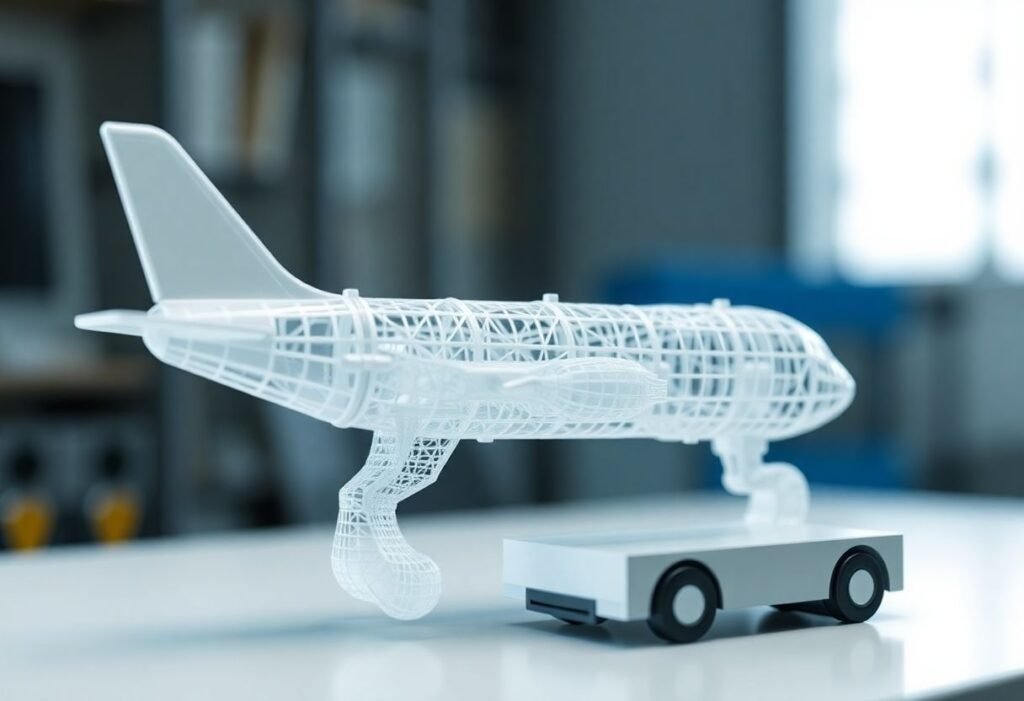3D printing has emerged as a transformative technology in various sectors, including logistics, which is crucial for enhancing efficiency and reducing costs in the supply chain. This innovation enables companies to streamline their operations, reduce waste, and gain a competitive edge in today’s fast-paced market.
The Role of 3D Printing in Supply Chain Optimization
3D printing, or additive manufacturing, plays a vital role in optimizing supply chains. By allowing for the production of parts on-demand, companies can minimize inventory costs and avoid overproduction, a common issue in traditional manufacturing. This technology enables companies to produce components based on real-time demand, reducing lead times drastically. For instance, organizations can manufacture replacement parts onsite, leading to significant savings in time and transportation costs. Moreover, 3D printing technology facilitates the decentralization of production, making it easier to serve regional markets quickly, which is a critical factor in today’s globalized economy.
Reduction of Transportation Costs through Local Production
Logistics is heavily dependent on transportation, which can account for a substantial portion of overall costs. With the help of 3D printing, companies can produce items locally rather than shipping them from far-off distribution centers. This shift can significantly reduce transportation costs and accelerate delivery times. In addition, by printing parts closer to where they are needed, businesses can respond more rapidly to changes in demand and customer preferences, enhancing service levels while minimizing waste and inventory. As a result, logistics firms can achieve higher profitability through reduced operational expenses.
Customization and Flexibility Offered by 3D Printing
One of the most remarkable advantages of 3D printing is its ability to provide customization and flexibility in production. Businesses can easily modify designs according to client specifications without incurring the significant costs associated with retooling traditional manufacturing processes. This capability is particularly beneficial in sectors like automotive and aerospace, where custom parts are often required. By leveraging 3D printing technology, logistics companies can quickly adapt their offerings to meet unique market demands, positioning themselves as leaders in innovation.
Environmental Impact and Sustainability of 3D Printing
The logistics industry is under increasing pressure to adopt sustainable practices. 3D printing can play a significant role in enhancing environmental sustainability by reducing waste through layer-by-layer production. Traditional manufacturing often leads to excess scrap material, while additive manufacturing uses only the materials necessary to create each item. Moreover, localized production helps decrease carbon footprints associated with transportation. Firms adopting 3D printing processes can bolster their sustainability credentials, appealing to environmentally conscious consumers.
Challenges and Limitations of Implementing 3D Printing in Logistics
While the benefits of 3D printing in logistics are substantial, several challenges remain in its implementation. The initial investment in 3D printing equipment can be considerable, and there is a need for skilled personnel to operate the technology effectively. Additionally, ensuring quality and consistency of the printed products can pose significant hurdles. Companies must navigate these challenges thoughtfully to maximize the advantages of this innovative technology.
The Future of 3D Printing in Logistics
Looking ahead, the future of 3D printing in the logistics sector appears promising. As technology advances, we can expect improvements in printing speed, material variety, and overall quality. Furthermore, the integration of 3D printing with other technologies, such as artificial intelligence and the Internet of Things, will pave the way for smarter supply chains. Companies willing to invest in and adopt these innovations stand to benefit immensely, ensuring efficient operations and meeting the demands of a dynamic market.
Disclaimer: The information provided in this article is for informational purposes only and should not be considered as professional advice.





















